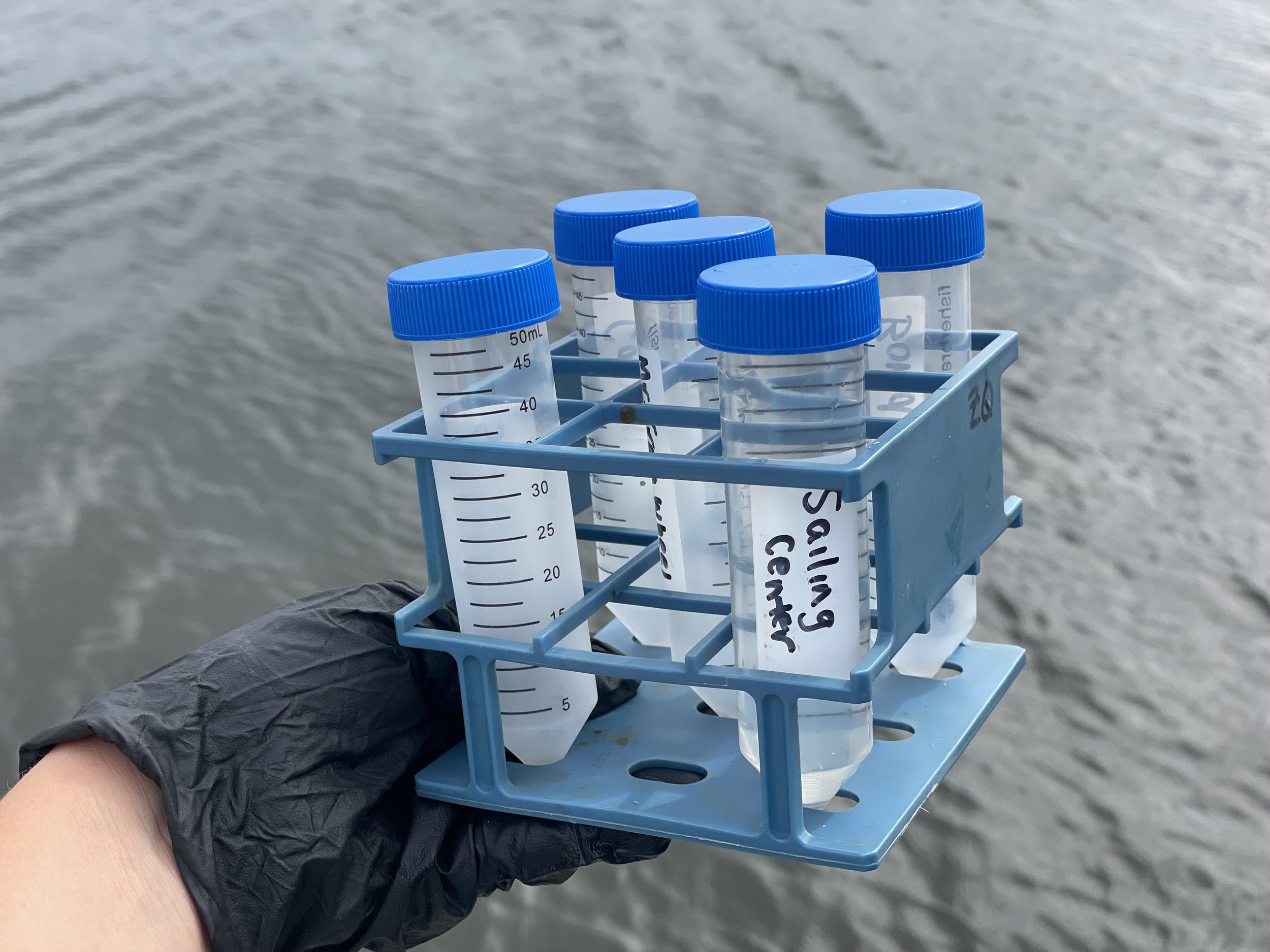How Do We Monitor Water Quality In The Baltimore Harbor?
In April of 2023, Waterfront Partnership began daily (Mon - Fri) bacteria monitoring at five sites in the Baltimore Harbor. The sampling season ran from April through October. At each site, a small sample of harbor water is collected in a vial and dropped off at ZooQuatic Laboratory where it is assessed for bacteria levels through an incubation process. The results are reported to Waterfront Partnership within 48 hours (often sooner) and are recorded on SwimGuide.org. The sampling season of the water monitoring program ended on October 27th.
The five collection sites were chosen based on their geographic and biologic features, as well as the likelihood of human contact with water at the site. Healthy Harbor, an initiative of Waterfront Partnership, is focused on how water quality impacts recreation within and around the harbor water, so choosing sites where locals are known to launch kayaks and sailboats is important to the goals of the monitoring program. The program runs April through October because most people who are coming in contact with harbor water are doing so in the warmer months of the year.
The water samples are collected before noon each weekday by a Healthy Harbor employee. Necessary equipment for the collection process includes a secchi disk to read the clarity of the water, a Beta™ bottle to capture the sample, and a cooler to ensure bacteria does not die en route to the laboratory (which would give inaccurate results).
The secchi disk is a weighted metal disk that is lowered into the water until the white colored portions of it can no longer be seen. The depth of the disk is recorded based on markings on the attached rope. Clarity varies greatly from site to site and day to day with catalysts including increased algal blooms due to warm weather and suspended sediment in the water due to intense rain events. The Beta™ bottle is used to capture a water sample at a particular depth. A portion of the sample is dispensed into a small vial by valves on the bottle. Next the sample is capped and placed into a cooler with an ice pack.
Once all five samples are collected, they are brought to lab technicians at ZooQuatic Laboratories. The processing of the sample involves incubation and observing bacteria under a black light. The technicians count bacterial colonies and use an equation to determine the enterococcus bacteria score. Enterococci is a fecal indicator bacteria, meaning it is not known to be harmful to humans, but it is useful for determining when fecal matter is in a sample, whether it be human or animal. According to EPA swimming standards, an enterococcus score of less than 130 MPN (most probable number) per 100 mL is a passing score, and 130 MPN or above is a failing score.
Public access to daily sample scores is a great tool for those who are thinking about recreating in the Baltimore harbor, as well as for general knowledge of bacteria trends as they relate to rain storms and other weather events. With continued monitoring and outreach efforts, Waterfront Partnership hopes to be a part of bringing back a swimmable and fishable Baltimore harbor.
Collective Action Cleaned This Harbor
But this is just the beginning. As early as 2019, we knew we were reaching a tipping point where, with routine monitoring, the Harbor could be safely managed as a recreational resource for the city and region.In 2024, we will host Harbor Splash, a plunge event that will be open to anyone who registers. We expect this first swim to be limited in size and scope.





